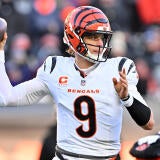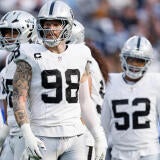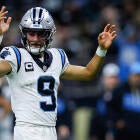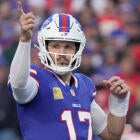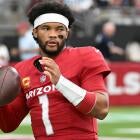2021 NFL season kickoff: Stats, notes and nuggets for every fan to remember entering Week 1
This is a PSA for all NFL fans at the start of the 2021 season
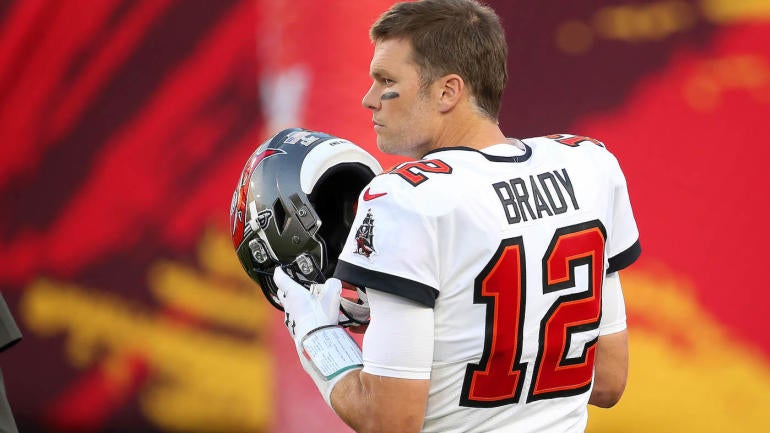
Imagine this: you're finally reunited with your best friend after years apart, and following an exuberant greeting you find yourself at a loss for words because you're just too damn excited.
That phenomenon -- I'll call it "Excitement-Induced Brain Fog" -- occurs at the start of every NFL season. Here's the formula: too much anticipation plus a long time away from football equals fan EIBF.
EIBF will infiltrate TV rooms and NFL stadiums starting tonight with Buccaneers-Cowboys and continue through most of September. So, I've pieced together everything you need to remember at the beginning of the 2021 season to combat the EIBF sensation.
There's always a wild upset or strange outcome in Week 1
[Samuel L. Jackson voice] "Hold onto your butts." This will happen. It's the NFL's version of The Upside Down at the outset of every season. So prepare yourself. Want proof? I got you.
Last year, the eventual 1-15 Jaguars beat the playoff-bound Colts in a bizarre Week 1 contest that featured only one Gardner Minshew incompletion and a 2.4 yards-per-carry average for Jonathan Taylor.
No upset shattered the football landscape in 2019, but the Lions and Cardinals tied 27-27. Arizona scored six points through three quarters before erupting for 18 in the fourth, and Detroit linebacker Christian Jones dropped what would've likely been a game-sealing interception in overtime. On that same day, the eventual 11-5 Seahawks needed a fourth-quarter, Russell Wilson-to-Tyler Lockett touchdown strike to beat the eventual 2-14 Bengals, 21-20.
At the start of the prior season, the Buccaneers, who ultimately went 5-11, upended the 13-3 NFC North champion Saints, 48-40. Ryan Fitzpatrick averaged 14.9 yards per attempt (!) and had a QB rating of 156.3. The Saints would go on to finish eighth in Football Outsiders defensive DVOA, the all-encompassing efficiency metric.
In 2017, the 5-11 Broncos beat the 9-7 Chargers. In 2016, a 49ers team that ultimately went 2-14, looked like the most complete team in football in a 28-0 blanking of the almost equally as bad, eventual 4-12 Los Angeles Rams. Blaine Gabbert was the starting quarterback for San Francisco that afternoon. Jeremy Kerley led the 49ers in receiving. Heck, even in 2015, San Francisco beat the Vikings, 20-3, in Week 1. The 49ers finished 5-11. The Vikings won the NFC North at 11-5.
So, if one score doesn't exactly feel right in your football-loving bones in Week 1, it probably isn't. Week 1 is a helluva drug.
There will be a bad call that wipes out a big play for your team
Getting this out of the way early.
Deep breath in. Slowly exhale. Remember, your team is not alone. It will happen to everybody. It all comes out in the wash. Actually, this will happen more than once. Many times. Move on to the next play.
Excited for the biggest NFL schedule in history? Follow along on the CBS Sports app and get the latest insights from our team of NFL insiders, plus news from our team of experts, as well as data insights on every player. If you already have the CBS Sports app, make sure to favorite the your favorite team so you don't miss a thing!
Your team should be passing more
Yes, this has been the fundamental plea of the NFL analytics movement for a while now. But for as annoyed as you may be with it, it's true. Your team needs to pass more this season. Of the 36 quarterbacks who attempted at least 200 passes last year, only Dwayne Haskins, Sam Darnold, and Carson Wentz averaged less than 5.0 yards per dropback.
Strictly from a yardage perspective for qualifying backs, the Eagles were the only team in the NFL with the ultra-rare dynamic where it was actually more beneficial for them to hand the ball to Miles Sanders (5.3 yards per rush) than have Wentz drop back to pass (4.7 yards per dropback).
Even the Washington Football Team gained a tick more yards on average on a Dwayne Haskins dropback (4.97 yards per) than an Antonio Gibson run (4.7 yards per).
Now, if new-age analytics are your thing, you probably know about Expected Points Added (EPA). If you don't, to summarize -- it assigns points to plays relative to the expectation of that given situation based on all-time history. And "all-time history" is a rather large sample size, wouldn't you say?
In 2020, there were eight teams that finished with a negative EPA (a net loss for the offense) on pass plays. Conversely, there were only five teams that posted a positive EPA on their rushing plays. Read that again.
And don't even get me started on first-down runs. I propose they are abolished from every offensive game-plan in the NFL.
This, from a season ago, illustrates every team's EPA rushing the football and throwing the football on that ever-important first down.

Notice the difference in baselines between rushing and passing plays. It's staggering. Only the Browns -- with that elite offensive line, the duo of Nick Chubb and Kareem Hunt, and Kevin Stefanski's time-tested running scheme -- and the Seahawks -- Russell Wilson's 6.2 yards-per-carry average must be considered -- finished the regular season with a positive EPA on first-down rushes!
I rest my case.
The following cliches/tired narratives
You need a refresher on some of your most common cliches and tired narratives. Here are a few to jog your memory for others:
- Tom Brady is older than [insert any football player on earth]
- Ryan Fitzpatrick went to Harvard, has played on many teams
- Bills Mafia likes to jump through tables while tailgating
- Aaron Rodgers was mad at the Packers this offseason
- A coach or analyst citing the following: "When Team X runs the ball [arbitrary threshold], they are [awesome win-loss record.]"
- Team social media accounts tweeting "one team, one goal" at the start of the playoffs
Your team needs to use play-action more, regardless of its ground-game situation
The analytics community has parsed it out -- run-game success has no correlation to play-action efficiency. In short, a largely average running back committee will have the same impact on play-action than if you have all 6-foot-3 and 250 pounds of Derrick Henry waiting for a handoff in your backfield.
Last year, 34 of 42 qualifying quarterbacks had a higher yards-per-attempt average on play-action than when not using it. However, 30 of those same quarterbacks utilized play-action on less than 30% of their dropbacks. Woof.
When would play-action be rendered essentially useless because it's expected? No one really knows. But you should hope your team's offensive coordinator tries to find that rate this season.
There is no Cowboys-Giants or Eagles-Cowboys game on Sunday Night Football for the first time ever
Ok, so not a reminder, but since the inception of NBC's Sunday Night Football [insert Cris Collinsworth slide in] there has been either an Eagles-Cowboys or Cowboys-Giants game as part of the show's schedule every single year. Technically, the Eagles and Cowboys played on Christmas in 2006, which was a Monday, but it was a SNF program.
For as much as I understand why those games are scheduled for SNF each year -- huge markets, enormous fan bases, bitter rivalries -- not getting either of those matchups on the marvelous Sunday Night Football telecast will be damn refreshing.
There will be a bunch of new teams in the playoffs
Last year there were six new playoff teams. That's close to the normal average. So "chalk" represents right around half the postseason field every season. Adjust your season predictions accordingly.
You (probably) can impact the game if you're in attendance this year more than ever before
Data science does not have my back on this one. Yet. I'm borrowing this theory from my buddy Scott Kacsmar, formerly of Football Outsiders and one of football's best statistical historians out there.
This is what he wrote in his recent season-prediction blog post:
The crowds are back for now, so it will be very interesting to see what happens to the offensive stats after 2020 was the highest-scoring season in NFL history at 24.8 points per game, a full 1.4 points above the previous record (2013). Yards per play (5.6) were never higher and turnovers per game (1.3) were never lower. We had more first downs per game (21.7) than ever before as teams completed the most passes per game (23.0) at the highest completion percentage (65.2%) ever recorded. That led to the highest passer rating (93.6) for a season and the record for most touchdown passes (871 or 27.2 per team).
We only have complete data for third downs back to 1991, but 2020 saw offenses convert 41.6% of the time on third down, a new record. The only other season over 40% was 1995 (40.1%).
Astounding, right? It sure does feels like crowds will change the game this season. Like they used to, remember? When you're there, get loud. It'll go a long way in restoring normalcy in the NFL. I probably didn't need to tell you about cranking the volume inside the stadium. I just did it as a safeguard against Excitement-Induced Brain Fog on game days.


